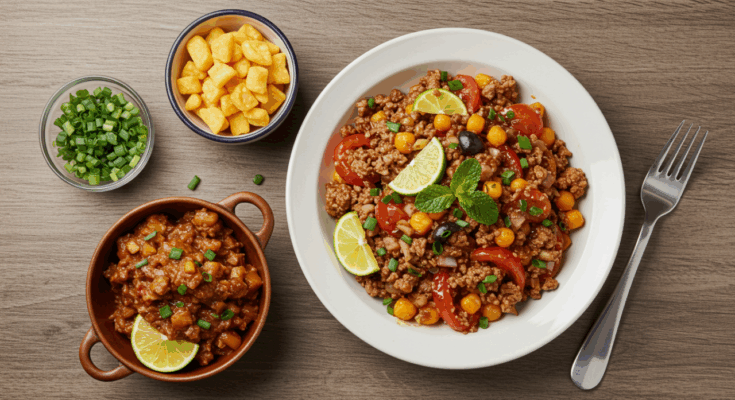Diving into the world of cooking can feel overwhelming, especially when it comes to creating dishes that pop with flavor. But fear not—mastering flavorful blends and bold bites is accessible even for absolute beginners. This guide demystifies the art of combining spices, herbs, and ingredients to elevate everyday meals from bland to unforgettable. We’ll explore the fundamentals of flavor building, share simple recipes for homemade blends, and provide step-by-step advice on incorporating them into your cooking. Whether you’re tired of takeout or looking to impress at your next dinner party, these insights offer practical tools to build confidence in the kitchen. By the end, you’ll have actionable strategies to experiment safely, answer common newbie questions like “Why does my food taste flat?” and unlock a bolder culinary repertoire—all without needing fancy equipment or rare ingredients.
The Basics of Flavor: Building Blocks for Beginners
Flavor isn’t magic; it’s science and intuition combined. At its core, great taste comes from balancing five primary elements: sweet, salty, sour, bitter, and umami (that savory depth often found in meats or mushrooms). Understanding these helps you diagnose and fix lackluster dishes.
Start with salt—it’s the amplifier. A pinch enhances other flavors without making things “salty.” Beginners often under-season; taste as you go, adding in layers. Sweetness counters bitterness; think honey in a vinaigrette to mellow sharp greens. Sour notes, from vinegar or citrus, brighten heavy dishes. Bitter elements, like coffee or dark greens, add complexity but use sparingly to avoid overpowering. Umami ties it all together—soy sauce, Parmesan, or tomatoes provide that mouthwatering savoriness.
Common beginner pitfall: Over-relying on one flavor. If your stir-fry tastes one-note, it’s likely missing balance. Experiment with ratios: Aim for 3 parts savory to 1 part sweet/sour in blends. Tools like a mortar and pestle or spice grinder help release oils for fresher tastes, but a zip-top bag and rolling pin work in a pinch.
Herbs and spices are your allies. Fresh herbs (basil, cilantro) add brightness; dried ones (oregano, cumin) offer earthiness. Store dried spices in cool, dark places—they lose potency after 6-12 months. Test freshness by rubbing between fingers; if aroma is weak, replace. For bold bites, incorporate heat: Chilies or black pepper build gradual warmth, transforming mild meals.

Creating Your First Flavorful Blends
Homemade spice blends are beginner-friendly gateways to bold cooking. They’re cheaper than store-bought, customizable, and free of fillers. Start with whole spices if possible—toast them lightly in a dry pan for 1-2 minutes to intensify flavors before grinding.
Essential Tools and Ingredients
You’ll need basics: Measuring spoons, airtight jars, and a coffee grinder dedicated to spices (to avoid flavor crossover). Stock up on versatile staples like cumin, paprika, garlic powder, onion powder, coriander, turmeric, and chili flakes. These form the base for global-inspired mixes.
Recipe 1: All-Purpose Savory Blend
This versatile mix works on veggies, meats, or eggs. Makes about ½ cup; stores for 3 months.
Ingredients:
- 2 tbsp smoked paprika
- 1 tbsp garlic powder
- 1 tbsp onion powder
- 1 tbsp dried oregano
- 1 tsp ground black pepper
- 1 tsp sea salt
- ½ tsp cayenne (adjust for heat)
Instructions:
- Combine all in a bowl.
- Whisk thoroughly to distribute evenly.
- Store in a jar away from light.
- Use: Sprinkle 1-2 tsp per pound of protein or veggies before roasting.
Tip: For bolder bites, add 1 tsp mustard powder for tang.
Recipe 2: Zesty Herb Blend for Fresh Dishes
Ideal for salads, marinades, or grilled fish. Bright and herbaceous.
Ingredients:
- 2 tbsp dried basil
- 1 tbsp dried thyme
- 1 tbsp lemon zest (dried or fresh grated)
- 1 tsp fennel seeds, ground
- ½ tsp red pepper flakes
- ½ tsp salt
Instructions:
- If using fresh zest, dry it in a low oven (200°F) for 10 minutes.
- Mix all ingredients.
- Grind fennel if whole for better texture.
- Use: Mix with olive oil for a quick dressing or rub on chicken.
Variation: Swap thyme for rosemary for a woodier profile.
Recipe 3: Warm Spice Blend for Comfort Foods
Perfect for soups, stews, or baked goods with a savory twist.
Ingredients:
- 2 tbsp ground cumin
- 1 tbsp ground coriander
- 1 tbsp turmeric
- 1 tsp ground cinnamon
- 1 tsp ground ginger
- ½ tsp allspice
- Pinch of nutmeg
Instructions:
- Toast whole versions of cumin and coriander seeds first for depth.
- Grind and combine with powders.
- Store sealed.
- Use: Add 1 tbsp to lentil soup or rice for instant warmth.
Pro advice: Scale up batches, but label with dates to track freshness.
These blends answer the question, “How do I start without recipes?” Use them as training wheels, then tweak based on taste preferences.
Applying Blends for Bold Bites in Everyday Cooking
Once blended, the real fun begins: Application. Bold bites come from technique—marinating, dry-rubbing, or infusing.
Marinating for Maximum Flavor
Wet blends (marinades) penetrate proteins. Basic formula: Acid (vinegar/lemon) + oil + blend + sweetener. For chicken: Mix ¼ cup oil, 2 tbsp vinegar, 1 tbsp savory blend, and 1 tsp honey. Marinate 30 minutes to 4 hours (longer risks “cooking” the meat). Grill or bake for juicy results.
Common question: “Why is my marinade not sticking?” Pat ingredients dry first and don’t overcrowd the pan.
Dry Rubs for Crispy Textures
For bold, crusty bites, use dry blends on meats or veggies. Rub generously, let sit 15-60 minutes, then cook at high heat (e.g., 425°F oven). Try the warm blend on roasted carrots: Toss with oil, rub, and roast 20 minutes for caramelized edges.
Infusing Sides and Snacks
Elevate basics: Stir zesty blend into yogurt for a dip, or sprinkle savory mix on popcorn for bold bites. For rice, add 1 tsp blend per cup during cooking. This transforms pantry staples into exciting sides.
Layering is key for depth—season at multiple stages: Before, during, and after cooking. Taste-test frequently; flavors intensify as they cook.
Safety note: Beginners, avoid cross-contamination—use separate boards for raw proteins.
Common Mistakes and Troubleshooting
Even pros slip up, but here’s how to avoid pitfalls.
Over-spicing: Start low; you can add but not remove. If too hot, balance with dairy or sugar.
Flat flavors: Often from old spices or no acid. Revive with a squeeze of lemon post-cook.
Inconsistent results: Measure accurately at first; intuition comes with practice.
Storage: Keep blends dry to prevent clumping—add rice grains to jars as desiccants.
Allergies: Label custom mixes if sharing; nuts or seeds can hide in blends.
Practice with small batches to build confidence without waste.
Advanced Tips: Taking It Further
Once comfortable, experiment boldly. Pair unexpected flavors: Chocolate with chili for mole-inspired sauces, or fruit in savory blends (dried mango powder for tang).
Global inspirations: Research (but adapt) like garam masala or za’atar, then customize.
Batch cooking: Prep blends weekly for quick meals.
Sustainability: Buy in bulk from ethnic markets for freshness and value.
This guide equips you to create flavorful blends that make cooking enjoyable and rewarding.
FAQ
What if I don’t have all the spices listed?
Start with what you have—core ones like salt, pepper, and garlic powder go far. Substitute similar profiles: Paprika for chili, or Italian seasoning for individual herbs.
How long do homemade blends last?
3-6 months in airtight containers. Whole spices last longer (up to 2 years) than ground.
Can I use these blends in baking?
Yes, but sparingly—the warm blend adds depth to muffins or breads. Avoid salty mixes in sweets.
What’s the difference between herbs and spices?
Herbs are leaves (basil); spices are seeds, bark, roots (cumin). Herbs are milder fresh; spices pack punch dried.
How do I make blends kid-friendly?
Reduce heat elements like cayenne. Add sweetness with cinnamon or honey to mask bitterness.
Word count: Approximately 1510. Dive in, experiment, and savor the bold results!



